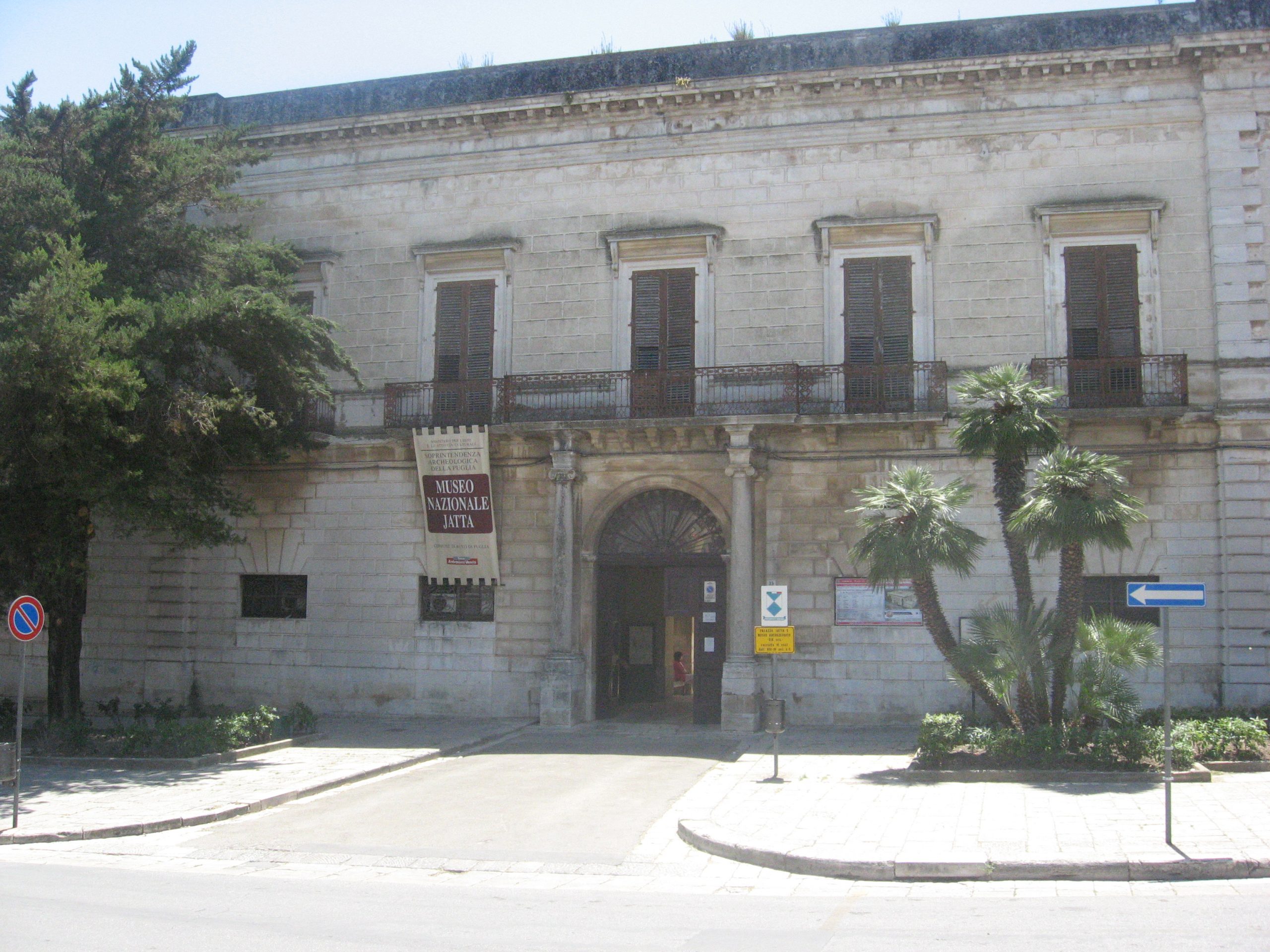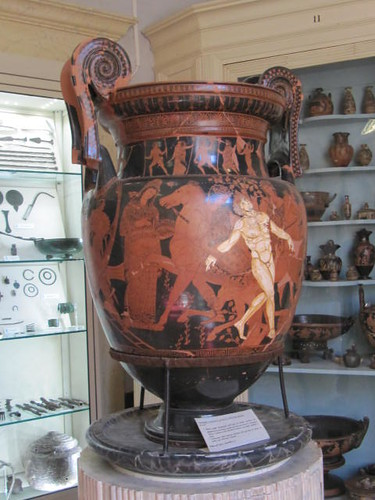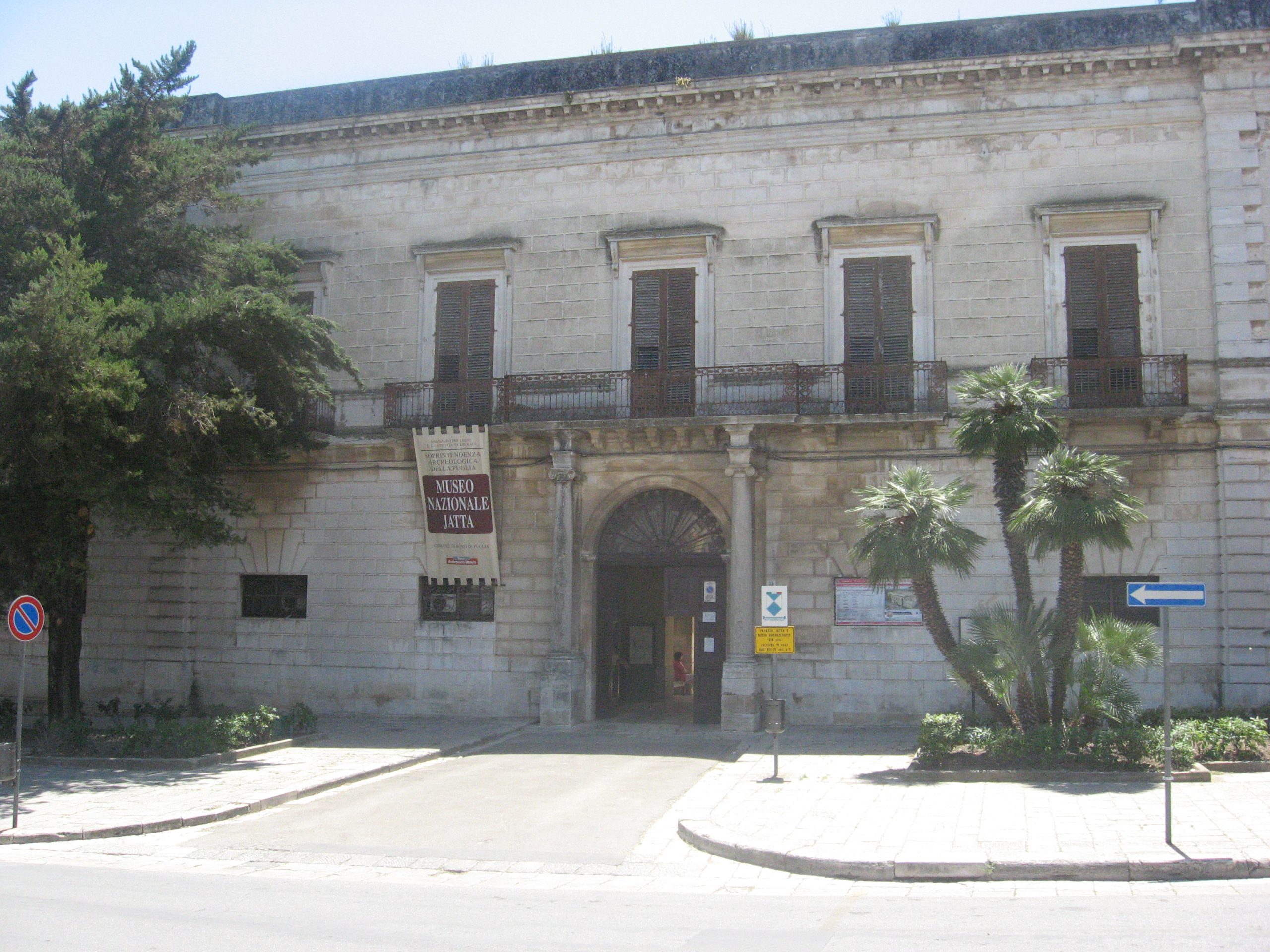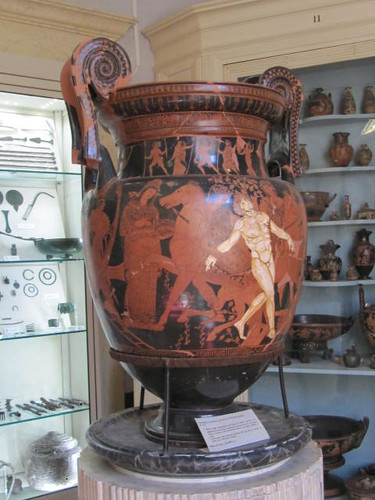
Ruvo di Puglia
CATTEDRALE DI SANTA MARIA ASSUNTA
Ruvo di Puglia è un importante centro agricolo della Murgia pugliese. La sua origine risale al tempo dei Peuceti, antica popolazione italica, che si era stanziata in Puglia già a partire dal VII secolo a.C.
L’importanza di questa cittadina, che fu municipio romano e sede di una delle prime diocesi della regione, è legata alla sua posizione strategica lungo la via Traiana. Ruvo infatti era un centro di sosta sulla strada che proveniva da Benevento.
Nel bel centro storico medievale, caratterizzato da un intricato sistema di vicoli e vicoletti, sorge una delle cattedrali più belle della Puglia. Questa chiesa duecentesca incanta ancora oggi il viaggiatore per il suo singolare prospetto a spioventi fortemente inclinati, per il portale maggiore riccamente decorato, e soprattutto per il grande rosone a dodici raggi che si apre sulla facciata principale. Gli archetti pensili che decorano il profilo a capanna della chiesa sono arricchiti da mensole scolpite con motivi vegetali, teste animali e umane di chiara ispirazione classica. È facile supporre che gli scultori locali potessero trarre ispirazione dai numerosi vasi e reperti di epoca classica che i terreni di Ruvo restituivano generosamente, poiché nell’antichità la città era uno dei centri più importanti della produzione di ceramiche apule.
L’interno della chiesa presenta un impianto basilicale a tre navate terminanti in altrettante absidi semicircolari.
Nei sotterranei della chiesa è possibile, rivolgendosi al sagrestano e pagando una cifra simbolica più che un vero e proprio biglietto, visitare degli ipogei della chiesa, che permettono di compiere un ideale viaggio nel passato di Ruvo, risalendo sino al periodo Neolitico, grazie ai reperti qui conservati e alle testimonianze archeologiche rinvenute, tra cui antiche sepolture e i resti di precedenti edifici sacri dei primi secoli del cristianesimo.

Ruvo di Puglia, Cattedrale
(foto di Sailko – Opera propria, CC BY 3.0, https://commons.wikimedia.org/w/index.php?curid=59430789)
MUSEO JATTA

Ruvo, Palazzo Jatta, foto di Cunhal94 is licensed under CC BY-SA 3.0
<p style=”font-size: 0.9rem;font-style: italic;”><a href=”https://commons.wikimedia.org/w/index.php?curid=19759736″>”File:Palazzo Jatta Ruvo di Puglia.JPG”</a><span>by <a href=”https://commons.wikimedia.org/wiki/User:Cunhal94″>Cunhal94</a></span> is licensed under <a href=”https://creativecommons.org/licenses/by-sa/3.0/?ref=ccsearch&atype=html” style=”margin-right: 5px;”>CC BY-SA 3.0</a><a href=”https://creativecommons.org/licenses/by-sa/3.0/?ref=ccsearch&atype=html” target=”_blank” rel=”noopener noreferrer” style=”display: inline-block;white-space: none;opacity: .7;margin-top: 2px;margin-left: 3px;height: 22px !important;”><img style=”height: inherit;margin-right: 3px;display: inline-block;” src=”https://search.creativecommons.org/static/img/cc_icon.svg” /><img style=”height: inherit;margin-right: 3px;display: inline-block;” src=”https://search.creativecommons.org/static/img/cc-by_icon.svg” /><img style=”height: inherit;margin-right: 3px;display: inline-block;” src=”https://search.creativecommons.org/static/img/cc-sa_icon.svg” /></a></p>
Non si può lasciare Ruvo senza aver prima visitato il Museo Jatta, non solo per il ricco patrimonio di vasi apuli che ospita, ma anche per la cornice museografica entro cui sono esposti: il neo-classicheggiante Palazzo Jatta. Il Museo è uno dei pochissimi esempi in Italia di una raccolta privata, formatasi tra il 1820 e il 1935, rimasta intatta e allestita secondo il gusto tardo ottocentesco.
Contiene una pregevole collezione di oltre 2000 vasi, rinvenuti nel territorio di Ruvo grazie all’impegno e alle appassionate ricerche archeologiche di Giovanni Jatta e della sua famiglia. Gli Jatta volevano porre fine alla pratica, largamente diffusa nel XIX secolo, di saccheggiare tombe e sepolcreti antichi a fini commerciali e speculativi, per questo iniziarono ad acquistare manufatti sul mercato antiquario e a presiedere campagne di scavo, salvando da tombaroli e contrabbandieri gran parte del patrimonio storico del territorio. La preziosa raccolta di famiglia costituisce la collezione del Museo Jatta. Uno dei pezzi più pregevoli del museo si trova nella stanza IV, si tratta di un cratere attico risalente al V secolo a.C. Vi è rappresentata una scena delle Argonautiche di Apollonio Rodio, la Morte di Talos. Si riconoscono le figure, elegantemente dipinte, del gigante che cade, sostenuto da uno dei Dioscuri, per effetto dell’incantesimo di Medea.

Ruvo, Museo Jatta, vaso di Talos (foto di julianna.lees is licensed under CC BY-NC-SA 2.0 )
<p style=”font-size: 0.9rem;font-style: italic;”><a href=”https://www.flickr.com/photos/27305838@N04/14257714594″>”Museo Jatta – Jatta Museum, Ruvo, Ceramics of Magna Graecia”</a><span>by <a href=”https://www.flickr.com/photos/27305838@N04″>julianna.lees</a></span> is licensed under <a href=”https://creativecommons.org/licenses/by-nc-sa/2.0/?ref=ccsearch&atype=html” style=”margin-right: 5px;”>CC BY-NC-SA 2.0</a><a href=”https://creativecommons.org/licenses/by-nc-sa/2.0/?ref=ccsearch&atype=html” target=”_blank” rel=”noopener noreferrer” style=”display: inline-block;white-space: none;opacity: .7;margin-top: 2px;margin-left: 3px;height: 22px !important;”><img style=”height: inherit;margin-right: 3px;display: inline-block;” src=”https://search.creativecommons.org/static/img/cc_icon.svg” /><img style=”height: inherit;margin-right: 3px;display: inline-block;” src=”https://search.creativecommons.org/static/img/cc-by_icon.svg” /><img style=”height: inherit;margin-right: 3px;display: inline-block;” src=”https://search.creativecommons.org/static/img/cc-nc_icon.svg” /><img style=”height: inherit;margin-right: 3px;display: inline-block;” src=”https://search.creativecommons.org/static/img/cc-sa_icon.svg” /></a></p>
Il Museo Jatta si trova a Ruvo, in piazza Bovio 35.
orari: Lunedì-Venerdì: 8.30 – 13.30; Sabato: 14.30 – 19.30; Domenica: 8.30 – 13.30 (prima e terza domenica del mese)


